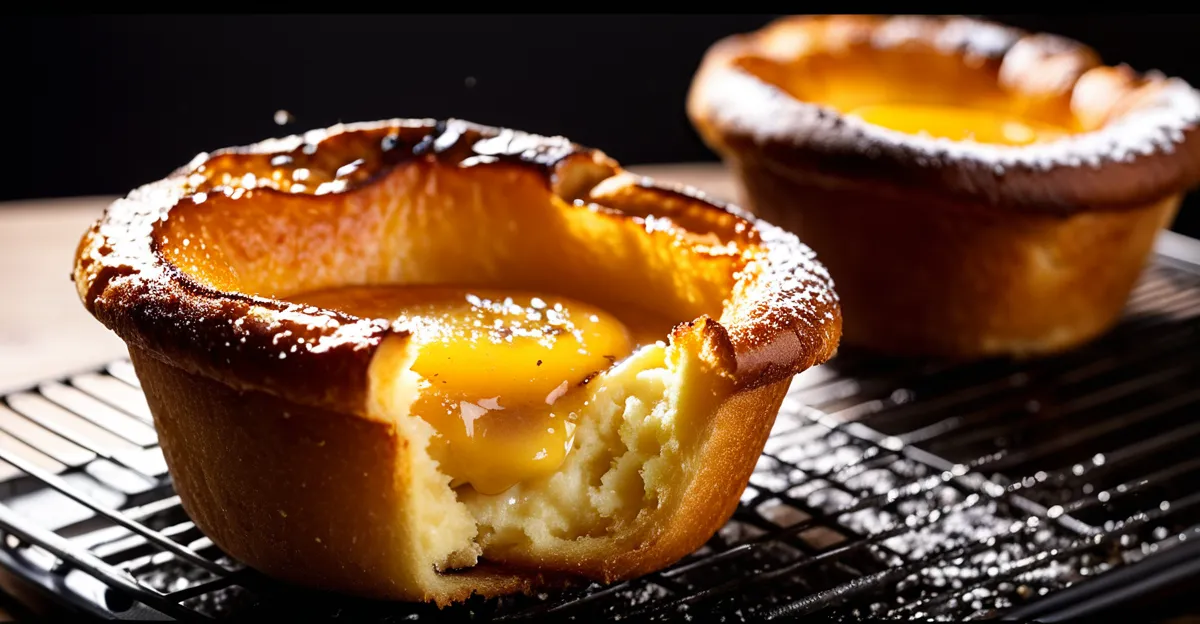Essential Ingredients for Fluffy Yorkshire Pudding
Creating fluffy Yorkshire puddings starts with using the right ingredients. The choice of Yorkshire pudding ingredients directly impacts the batter’s rise and texture. For flour, plain or all-purpose flour is preferred due to its moderate protein content, which provides enough structure without making the pudding tough. Eggs are equally vital; fresh, large eggs contribute to the fluffiness by incorporating air and aiding rise during baking.
Milk temperature plays a crucial role. Using milk at room temperature helps create a smooth batter and also promotes proper expansion in the oven. Cold milk can shock the mixture, affecting the pudding’s ability to puff up. Whole milk is commonly recommended, as its fat content enhances tenderness, but semi-skimmed milk is acceptable if you prefer a lighter result.
Have you seen this : What are the best ways to cook a traditional Cornish pasty?
Achieving the ideal batter consistency is essential. The batter should be thin enough to flow easily but not watery. A typical Yorkshire pudding batter has a consistency similar to heavy cream. This balance allows air to be trapped during mixing, which is crucial for the infamous Yorkshire pudding rise. Stirring the batter well but not overmixing maintains aeration without developing gluten excessively, ensuring the key ingredients for fluffy texture unite perfectly.
Step-by-Step Method to Achieve Fluffy Texture
Creating fluffy Yorkshire puddings depends greatly on the Yorkshire pudding recipe and how you approach the process. The first crucial step is mixing the batter properly to ensure maximum aeration. Vigorous whisking incorporates air, which serves as a natural leavening agent. This trapped air expands in the oven, helping to make the puddings rise beautifully.
Topic to read : What are some innovative ways to serve a traditional Welsh rarebit?
Resting the batter for at least 30 minutes is another key step in a step-by-step guide to making fluffy Yorkshire pudding. Resting allows the flour to absorb the liquid, leading to better batter consistency and improved gluten development. This results in a batter that rises more predictably and yields a lighter texture.
Preheating the oven and the pan is essential when making fluffy Yorkshire pudding. The pan must be very hot before pouring in the batter; this sudden temperature shock causes the batter edges to set quickly and rise upwards. Aim to have a consistently high oven temperature to sustain the rise. Following these steps carefully ensures the batter begins cooking instantly, locking in air and steam, which are vital for that classic airy texture.
Oven Techniques and Baking Tips
Mastering the oven temperature for Yorkshire pudding is pivotal to achieving that impressive rise and delicate texture. Set your oven to a high temperature—typically between 220°C and 230°C (425°F to 450°F). This hot oven trick ensures the batter rapidly expands as soon as it hits the pan. Rapid heat causes steam to form inside, pushing the batter upward and creating those iconic puffed pockets.
Another essential element is using very hot fat or oil in your baking tray or molds. Before pouring in the batter, preheat the oven with the fat inside until it sizzles upon contact with the batter. This process instantaneously sets the outer edges, trapping air and steam better, which is crucial for baking methods for fluffiness.
Placement in the oven also matters. Position your tray on the middle rack for even heat circulation to avoid uneven cooking or burnt bottoms. Keep the oven door closed while baking; any heat loss can cause the puddings to collapse. Monitoring these factors creates ideal conditions for a light, airy, and crispy Yorkshire pudding.
Troubleshooting Common Pitfalls
Fluffy Yorkshire puddings can sometimes turn out flat or dense, but understanding Yorkshire pudding mistakes helps you fix common issues. One main cause of flat Yorkshire pudding is insufficient heat. If the oven temperature isn’t high enough, or the fat isn’t sizzling hot before adding the batter, the puddings won’t rise properly. Always use a very hot oven and pan to trigger the classic puff.
Another frequent problem is a dense pudding. This often happens when the batter’s consistency is off—too thick or under-aerated—and when the batter is overmixed, reducing trapped air. To avoid this, follow the step-by-step guide closely: whisk the batter enough to incorporate air but don’t overwork the flour, and allow the batter to rest before baking.
Undercooked centers occur if the oven temperature drops during baking or if the oven door is opened too soon. Keep the oven door closed and don’t lower the heat during cooking. If your puddings collapse or sink after baking, it’s often linked to sudden temperature drops or batter inconsistencies, so maintaining a steady, high oven heat is essential.
By troubleshooting these factors, you can consistently create light, airy Yorkshire puddings with the perfect rise and texture.
Visual and Sensory Cues for Perfect Results
For signs of fluffy Yorkshire pudding, look for a golden-brown colour with a well-risen, puffed structure that suggests successful steam expansion. The edges should be crisp and slightly darker than the center, which remains tender. A good visual cue indicating fluffiness is the pudding’s pronounced rise, forming distinct pockets and a hollow center.
Testing doneness involves tapping the pudding lightly—if it sounds hollow, it confirms the interior is cooked and airy. The texture should feel firm but not hard, with a gentle spring when pressed. Avoid puddings that appear soggy or collapse easily; these indicate undercooking or batter inconsistency.
Serving at the right time is crucial. Yorkshire puddings are best enjoyed fresh from the oven when their puffiness and crisp edges are intact. If left to cool too long, steam escapes, and the pudding loses its fluffiness. Therefore, serving promptly after baking ensures optimal texture and appearance.
Paying attention to these visual cues, tapping tests, and serving timing helps guarantee your Yorkshire puddings reach their full fluffy potential every time. These straightforward checks complement the precise baking methods, making it easier to replicate perfect results with confidence.


